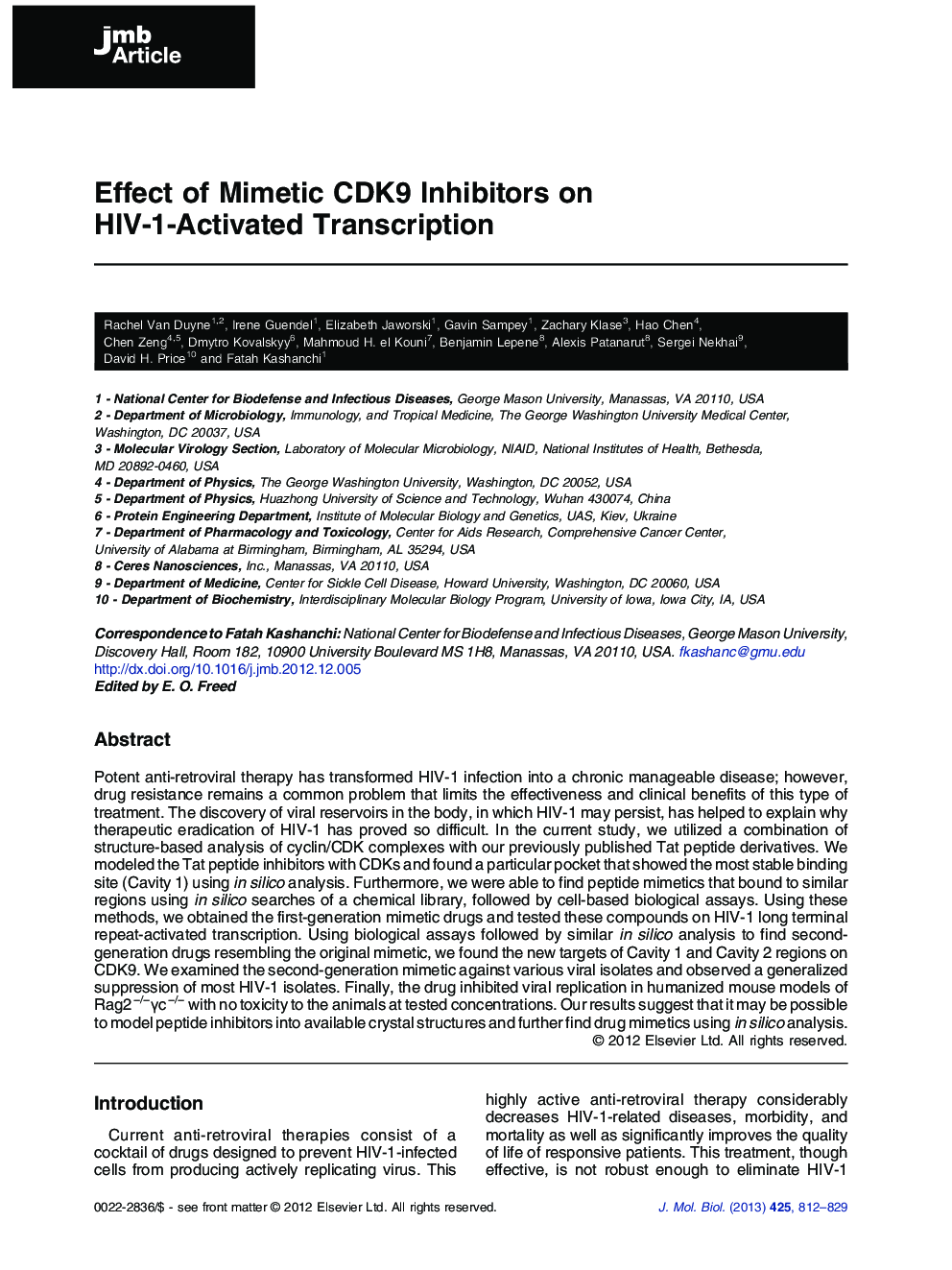| کد مقاله | کد نشریه | سال انتشار | مقاله انگلیسی | نسخه تمام متن |
|---|---|---|---|---|
| 2184595 | 1095892 | 2013 | 18 صفحه PDF | دانلود رایگان |

Potent anti-retroviral therapy has transformed HIV-1 infection into a chronic manageable disease; however, drug resistance remains a common problem that limits the effectiveness and clinical benefits of this type of treatment. The discovery of viral reservoirs in the body, in which HIV-1 may persist, has helped to explain why therapeutic eradication of HIV-1 has proved so difficult. In the current study, we utilized a combination of structure-based analysis of cyclin/CDK complexes with our previously published Tat peptide derivatives. We modeled the Tat peptide inhibitors with CDKs and found a particular pocket that showed the most stable binding site (Cavity 1) using in silico analysis. Furthermore, we were able to find peptide mimetics that bound to similar regions using in silico searches of a chemical library, followed by cell-based biological assays. Using these methods, we obtained the first-generation mimetic drugs and tested these compounds on HIV-1 long terminal repeat-activated transcription. Using biological assays followed by similar in silico analysis to find second-generation drugs resembling the original mimetic, we found the new targets of Cavity 1 and Cavity 2 regions on CDK9. We examined the second-generation mimetic against various viral isolates and observed a generalized suppression of most HIV-1 isolates. Finally, the drug inhibited viral replication in humanized mouse models of Rag2−/−γc−/− with no toxicity to the animals at tested concentrations. Our results suggest that it may be possible to model peptide inhibitors into available crystal structures and further find drug mimetics using in silico analysis.
Figure optionsDownload high-quality image (144 K)Download as PowerPoint slideHighlights
► Latent reservoirs of HIV-1 infected cells is a major hurdle for eradication therapy.
► Structure based analysis identified target residues on the CDK9/CyclinT1 interface.
► We identified drug mimetics that bind to CDK9 and inhibit HIV-1 transcription.
► Identified inhibitors can dissociate CDK9 away from its Cyclin partner in vitro.
► Novel CDK9/CyclinT1 complexes exist in HIV-1 infected cells.
Journal: Journal of Molecular Biology - Volume 425, Issue 4, 22 February 2013, Pages 812–829